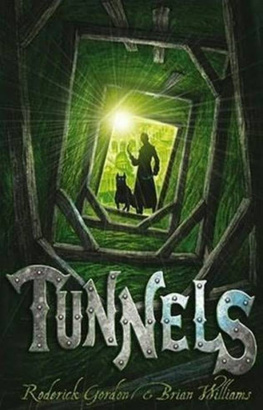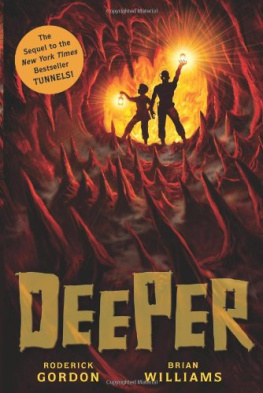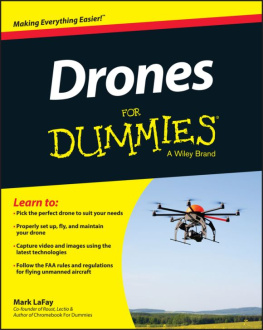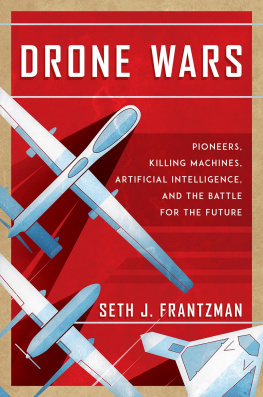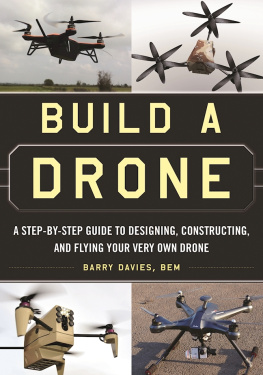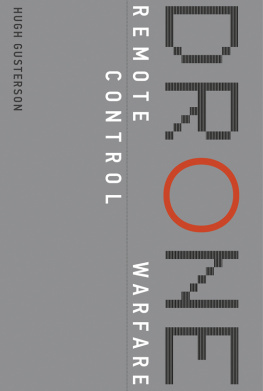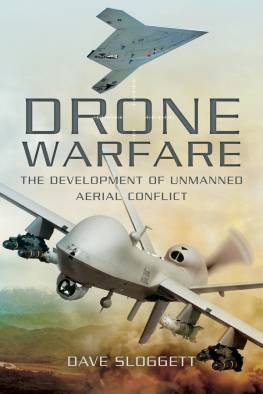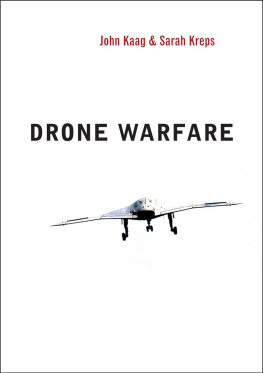Brian Glyn Williams
PREDATORS
The CIAs Drone War on al Qaeda


At the dawn of the twenty-first century, the United States, the worlds lone remaining superpower, launched itself across the globe in a war against terrorists who had struck at its heart on September 11, 2001. Among the most novel aspects of this campaign was the use by an ostensibly civilian organizationthe Central Intelligence Agency (CIA)of a new generation of unmanned, remote-control planes known as drones to kill the enemy hiding out in remote sanctuaries in Pakistan, Yemen, and Somalia. (The military has been in control of most drone operations in Iraq and Afghanistan.) Thousands of people, both terrorists and civilians, have been killed and many more continue to die in this aerial assassination campaign, yet there has been no thorough study of this remote-control warfare in remote lands to date. Critics and supporters of the drone killings debate the issue, often passionately, without having a basic outline of the vast covert operation.
As a historian I have made an effort in this book to fill this void, to record the history of what amounts to an all-out CIA drone war on the Taliban and al Qaeda in order to inform the debate on this controversial topic. In essence this book takes hundreds of disparate reports of drone attacks and weaves them together into one narrative. This work is not a polemic designed to cast moral aspersions on the campaign nor is it meant to condone it. Neither is it a study about the ethics and morality of this new cutting-edge killing technology. It is purely a record of these extraordinary events for the generation experiencing historys first remote-controlled drone war. Proponents and opponents of the campaign can do with this story what they will.
But first a word of caution: Because the CIA, the primary organization that runs the drone operations in Pakistan, Yemen, and Somalia, rarely acknowledges this covert counterterrorism campaign, this book is based entirely on open-source documents from the West and Pakistan. These sources can be flawed, but when taken together they are incredibly useful in providing new insights and the first overview of this murky chapter in the war on terrorism.
Many thanks to my parents, Gareth and Donna, who inspired me to study Muslim Eurasia in my youth and have continued to support me up until today. Thanks also to Feyza, my forbearing wife, for putting up with my obsession with drones these last few years. Teshekur (thanks) are also due to my parents-in-law, Feruzan and Kemal Altindag, who once again gave me a quiet place to write in their house on the coast of Turkey. I would also like to express my gratitude to Rafay Alem and his wife, Aysha, for letting me stay with them in their home in Pakistan. Tim Paicopolos did a masterful job of editing this volume, so I also owe him a debt of gratitude.
In this work I cite a drone study carried out in conjunction with my colleagues at the University of MassachusettsDartmouth, Avery Plaw and Matthew Fricker, so thanks to them as well. Thanks also to my chairmen/colleagues Len Travers and Mark Santow for providing me with a supportive, collegial environment in which to write this book. This work also benefited from the drone studies of Bill Roggio and Alexander Mayer at the indispensible Long War Journal, Peter Bergen and Katherine Tiedemann at the New America Foundation, and Noah Shachtman and other writers at Wired, so thanks to them for their excellent research. And shukriya to my Pashtun driver, Saki, who risked his life driving me through the tribal zones of Pakistan. Thanks to Canguo Liu for creating the wonderful maps found in this book and to my colleague at the University of MassachusettsDartmouth, Spencer Ladd, for recommending Liu. I would also like to thank Jason Seto for the constant barrage of stories related to drones he has sent me over the years. Lastly I would like to thank my former PhD advisers, Uli Schamiloglu and Kemal Karpat, for guiding me in my journey to understand the history of Muslims in Afghanistan and surrounding regions.
1
The Death of a Terrorist
Soon we will launch an attack in Washington that will amaze everyone in the world.
Pakistani Taliban leader Baitullah Mehsud
It is perhaps the worst-kept secret in the war on terror. In 2004 the Central Intelligence Agency (CIA) launched what amounts to an all-out airborne war, its most extensive assassination campaign since the Vietnam War, against Taliban and al Qaeda members hiding out in Pakistans wild tribal zones. Thousands have been assassinated in this covert bombing campaign, which is being waged by remote-control drones, or unmanned aerial vehicles (UAVs), known as Predators and the more advanced Reapers. These high-tech weapons in the sky have indisputably killed hundreds of al Qaeda and Taliban leaders who are actively planning new terrorist attacks on the American homeland or on Coalition troops in neighboring Afghanistan. Whether acting in a force protection role against Taliban insurgents trying to cross the Afghan-Pakistani border and attack U.S. and Coalition troops operating in Afghanistan or attempting to disrupt al Qaedas future acts of mass-casualty terrorism, the UAV drones are merciless and efficient killers. The enemy never knows when or where the machays (wasps, as they are known in the local Pashtun language) are going to strike next and lives in constant fear of being incinerated by Hellfire missiles fired by high-flying UAVs that are barely visible from the ground.
With their ability to loiter for up to twenty-four hours and use high-resolution cameras to follow their targets from afar, the UAV drones have added a level of precision to this bombing campaign that has never been seen in previous aerial campaigns. Whereas in earlier bombing campaigns high-flying jets dropped clumsy, unguided five-hundred-to-two-thousand-pound dumb bombs on their targets, the slower propeller-driven Predators and Reapers hover over their targets, track their pattern-of-life movements with high-resolution and infrared cameras, and fire smaller missiles and mini-bombs that are guided by lasers or satellites.
But as precise as they may be, the drones Hellfire or Scorpion missiles and Paveway guided bombs have also killed civilian bystanders. Scores of Pakistani tribesmen whose only crime was to be near a targeted al Qaeda convoy or Taliban hujra (compound or guest house) have been killed as unintentional collateral damage. The killing of Pakistani citizens on Pakistani soil by distrusted foreigners has, not surprisingly, caused a backlash of anti-Americanism in this proud country. The paradox then is that Americas most effective tool in killing high-value al Qaeda and Taliban targets may also be driving average Pakistanis to see the United States as their enemy. This could undermine the unstable pro-American government in this sprawling nuclear-armed country of 190 million people and inadvertently help recruit new terrorists.
SOUTH WAZIRISTAN AGENCY, PAKISTAN, AUGUST 5, 2009
This conundrum is best illustrated by the drone hunt to kill Pakistans most wanted man, Baitullah Mehsud. Mehsud was the leader of a coalition of Pakistani Taliban groups known as the Tehrek e Taliban e Pakistan (TTP). In 2007 Mehsud declared war on Pakistan and began to send waves of suicide bombers against Pakistani targets from his remote hideout in the mountainous tribal zones of Pakistans northwestern border with Afghanistan.1 These suicide bombers eventually killed thousands of Pakistanis.2 In one year alone (2009) Pakistani sources claimed that more than three thousand Pakistanis were killed by the Taliban.3 The murderous campaign was a slow-motion version of al Qaedas 2001 attack on the United States, and by 2008 Pakistan had surpassed Iraq as the number-one target for suicide bombers. No one seemed safe from the Pakistani Taliban terrorist mastermind who had no compunction about deliberately killing men, women, and children in his war against the pro-American puppet government of Pakistan.


